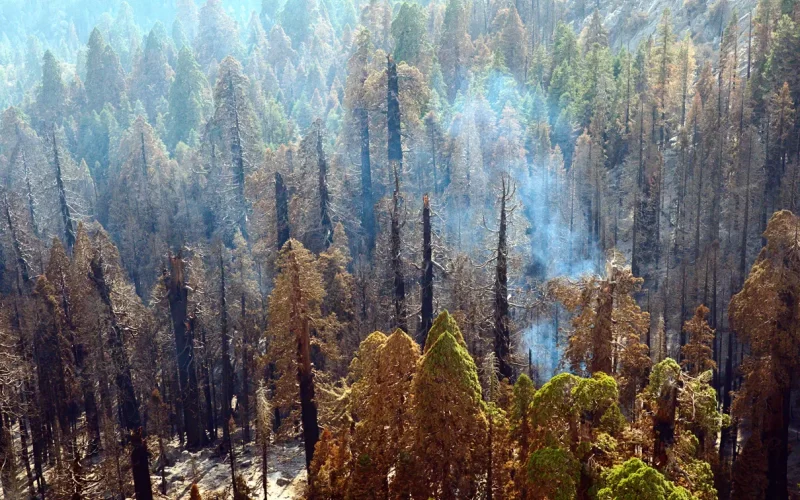The U.S. Forest Service has proposed increased logging on federal lands in the Pacific Northwest to combat wildfires and boost rural economies.
The proposal, which was revealed last Friday, aims to update the decades-old Northwest Forest Plan covering 38,000 square miles in Oregon, Washington and California.
Driving the news: The original plan was established in 1994 under President Bill Clinton.
- It was designed to curb logging practices that threatened wildlife habitats, particularly for spotted owls.
The big picture: Federal officials are looking to more actively manage forests under the new proposal.
- They also believe that increased logging would provide a consistent timber supply for companies, supporting rural economies impacted by mill closures and job losses.
- The proposal suggests that annual timber harvests could rise by at least 33% and potentially over 200%, leading to a corresponding growth in timber-related employment opportunities.
Go deeper: The proposal calculates an average of 445 million board feet harvested from the national forests annually over the past decade, indicating the potential scale of the changes. Increased logging is projected to reduce wildfire risks, improve community safety, and create conditions favorable for the growth of larger, fire-resistant old-growth trees by removing younger trees.
- The plan also aligns with President Joe Biden’s goal of enhancing protection for old-growth trees nationwide, crucial for carbon sequestration and mitigating climate change effects.
What they’re saying: Jacque Buchanan, regional forester for the U.S. Forest Service’s Pacific Northwest Region, said the proposal would help the federal government adapt to changing climate conditions.
- “Much has changed in society and science since the Northwest Forest Plan was created,” Buchanan told the Associated Press.










